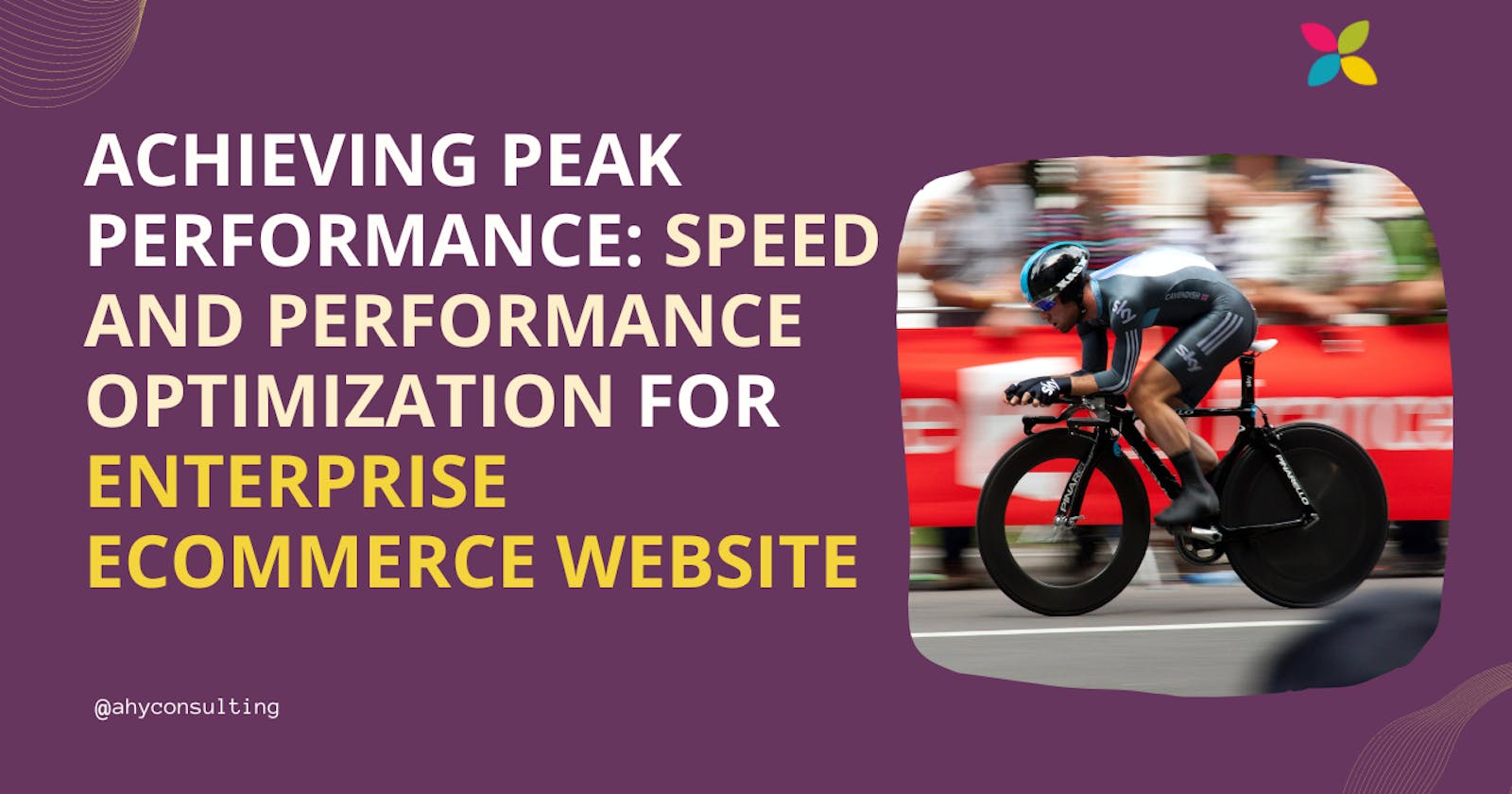Achieving Peak Performance: Speed and Performance Optimization for Enterprise eCommerce Websites
Maximizing Your Enterprise eCommerce Platform's Efficiency and User Satisfaction Through Performance Optimization Techniques
Introduction
Speed and performance are crucial factors for the success of any eCommerce website, particularly for large-scale enterprise operations. With high user expectations and an increasingly competitive market, businesses must ensure that their eCommerce platforms deliver a fast, seamless experience to avoid losing potential customers. In this blog post, we will discuss essential speed and performance optimization techniques for enterprise eCommerce websites and explore how these strategies can lead to improved user satisfaction and conversion rates.
Optimize Images and Media
Large, unoptimized images can significantly slow down page load times and negatively impact user experience. To ensure optimal performance, it's essential to compress images and use the appropriate formats, such as WebP or JPEG 2000, which offer better compression and quality than traditional formats like JPEG or PNG.
Utilize Caching Techniques
Caching can dramatically improve the performance of your eCommerce website by storing frequently used data to reduce server load and speed up page load times. Implement server-side caching for dynamic content and leverage browser caching to store static assets, such as CSS, JavaScript, and images, on the user's device.
Minify and Combine CSS and JavaScript Files
Minifying and combining CSS and JavaScript files can reduce their size and the number of HTTP requests made by the browser, leading to faster load times. Use tools like UglifyJS for JavaScript minification and CSSNano for CSS minification to optimize your code.
Implement a Content Delivery Network (CDN)
Using a CDN can significantly improve the speed and performance of your eCommerce website by distributing static assets across a network of servers located around the globe. This ensures that users receive content from the server closest to their location, reducing latency and improving load times.
Optimize Database Performance
For enterprise eCommerce websites with large databases, optimizing database performance is crucial. Regularly clean up your database by removing outdated or unnecessary data, utilize indexing to speed up queries, and consider implementing database caching solutions like Redis or Memcached for faster data retrieval.
Leverage Lazy Loading
Lazy loading is a technique that defers the loading of non-critical assets, such as images and videos, until they are needed. This can improve page load times by reducing the amount of data that needs to be loaded initially. Implement lazy loading for images, videos, and other media to enhance performance, particularly on content-heavy pages.
Optimize Server Configuration and Hosting Environment
Choosing a high-quality hosting provider and optimizing your server configuration can have a significant impact on your eCommerce website's performance. Ensure that your hosting environment is tailored to the specific requirements of your platform and consider upgrading to a dedicated server or cloud hosting solution for better performance and scalability.
Conclusion
Speed and performance optimization should be a top priority for enterprise eCommerce businesses looking to succeed in today's competitive online marketplace. By implementing the strategies outlined in this blog post, organizations can ensure that their eCommerce platforms offer fast, seamless experiences, leading to improved user satisfaction, higher conversion rates, and increased revenue.
If you need assistance with optimizing your enterprise eCommerce website's speed and performance, our team of experts is here to help. Contact us today to learn how we can support your business in achieving peak performance and delivering exceptional user experiences.

